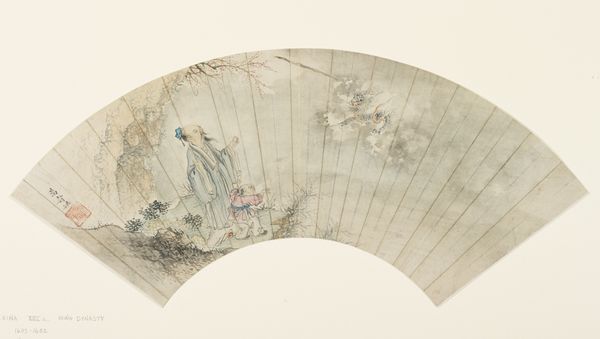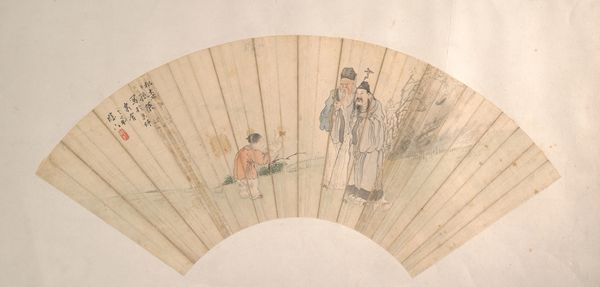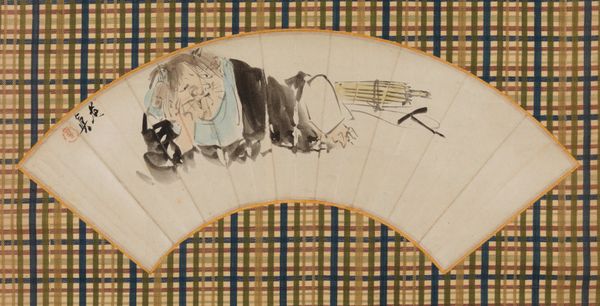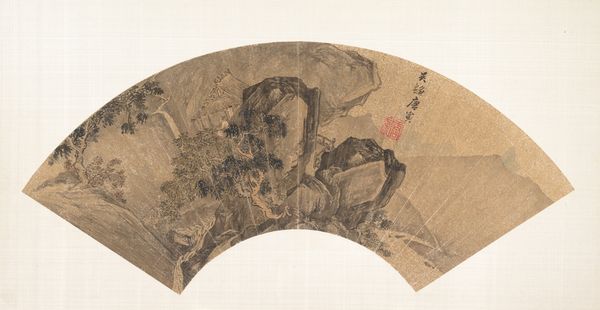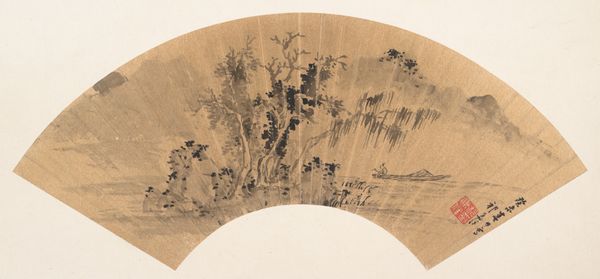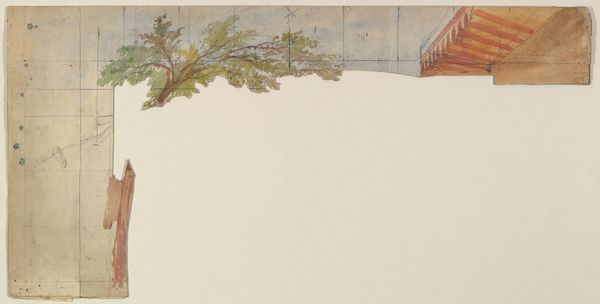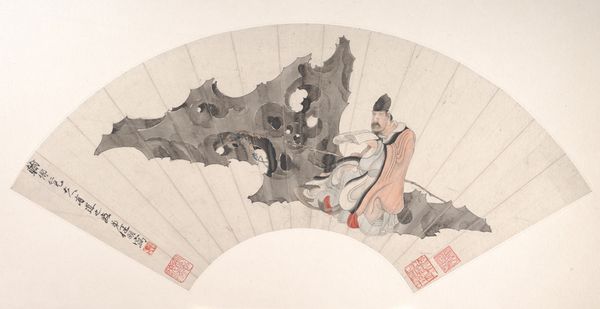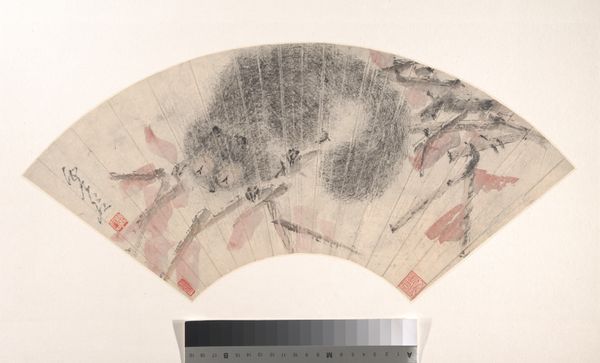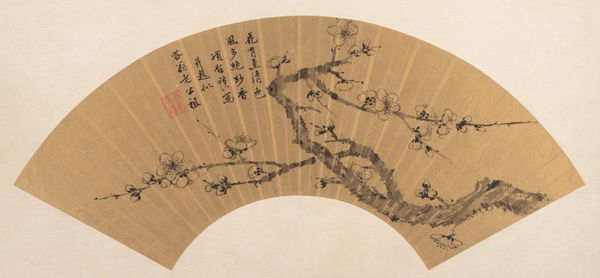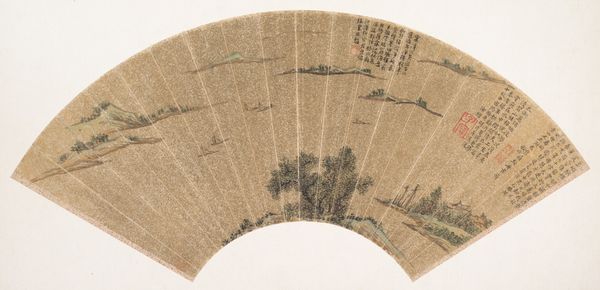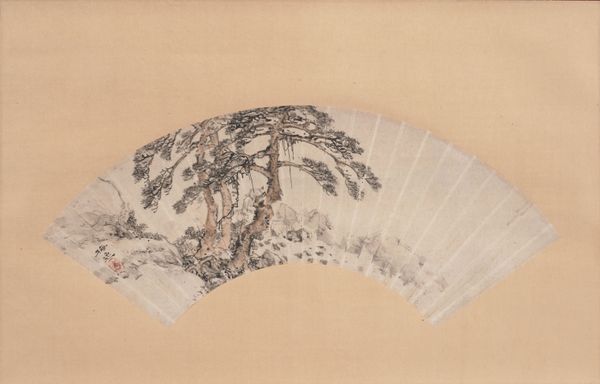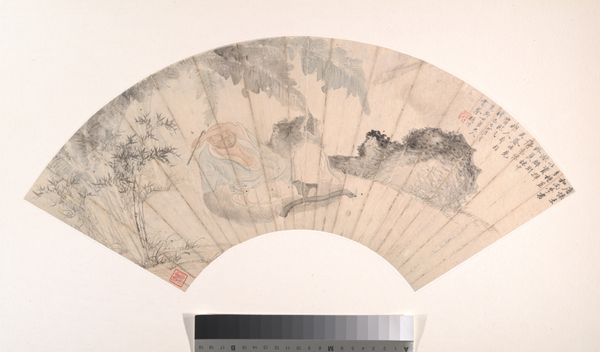
painting, watercolor
#
portrait
#
painting
#
asian-art
#
landscape
#
watercolor
#
watercolour illustration
#
genre-painting
#
watercolor
Dimensions: 6 9/16 x 9 3/8 in. (16.7 x 23.8 cm)
Copyright: Public Domain
Curator: "Scholar in the Wind," a watercolor created by Ren Xun between 1870 and 1890, now resides at the Metropolitan Museum of Art in New York. It depicts a solitary figure in a landscape, rendered on what appears to be a fan. Editor: My first thought? Intimacy. Despite being a landscape with a figure, there's a delicacy, a fragility almost, enhanced by the fan shape. It feels like a secret world held in your hand. Curator: That’s a beautiful observation. The fan format itself is crucial; it was a personal, portable object. So the landscape isn't just scenery; it's a cultivated space reflective of the scholar’s inner world and class identity, a carefully constructed extension of the self, designed to project wealth and good taste. We need to understand the scholar-official class in late Qing China. Editor: It's more than just class for me; there's a sense of loneliness, perhaps even quiet defiance. The way the figure leans into the wind, almost stubbornly… I wonder what that scholar was facing in his own life. I imagine him saying, “The wind? Bah! I’ve seen worse.” I love giving people imagined dialogues, you know! Curator: That resistance resonates. During this period, the scholar-official class was grappling with internal decline and external pressures from colonial powers. This scholar in the wind can be seen as emblematic of that struggle. Is he a portrait of resilience, or is it about a more futile opposition to the sweeping societal changes of the late Qing Dynasty? Editor: I love how art can be a Rorschach test! Seeing a man against the wind gets me thinking of life changes too. We can stand firm, change directions, or, sometimes, dance in the rain... or the wind, in this case! Curator: Exactly! It invites us to consider not just the man but the forces acting upon him. And by extension, what forces shape our own lives, our own resistance, and adaptations. Thank you. Editor: No, thank YOU! Always interesting when a single image can tell a new story with different angles. Keep the dialogue rolling, huh?
Comments
No comments
Be the first to comment and join the conversation on the ultimate creative platform.
